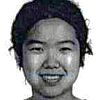| |
|
| |
|
| |
    
Stefan Grünewald,
Katharina Huber,
Vincent Moulton,
Charles Semple and
Andreas Spillner. Characterizing weak compatibility in terms of weighted quartets. In Advances in Applied Mathematics, Vol. 42(3):329-341, 2009.
Keywords: abstract network, characterization, from quartets, split network, weak hierarchy.
Note: http://www.math.canterbury.ac.nz/~c.semple/papers/GHMSS08.pdf, slides at http://www.lirmm.fr/miep08/slides/12_02_huber.pdf.
|
|
| |
 
Philippe Gambette and
Katharina Huber. On Encodings of Phylogenetic Networks of Bounded Level. In JOMB, Vol. 65(1):157-180, 2012.
Keywords: characterization, explicit network, from clusters, from rooted trees, from triplets, galled tree, identifiability, level k phylogenetic network, phylogenetic network, uniqueness, weak hierarchy.
Note: http://hal.archives-ouvertes.fr/hal-00609130/en/.
Toggle abstract
"Phylogenetic networks have now joined phylogenetic trees in the center of phylogenetics research. Like phylogenetic trees, such networks canonically induce collections of phylogenetic trees, clusters, and triplets, respectively. Thus it is not surprising that many network approaches aim to reconstruct a phylogenetic network from such collections. Related to the well-studied perfect phylogeny problem, the following question is of fundamental importance in this context: When does one of the above collections encode (i. e. uniquely describe) the network that induces it? For the large class of level-1 (phylogenetic) networks we characterize those level-1 networks for which an encoding in terms of one (or equivalently all) of the above collections exists. In addition, we show that three known distance measures for comparing phylogenetic networks are in fact metrics on the resulting subclass and give the diameter for two of them. Finally, we investigate the related concept of indistinguishability and also show that many properties enjoyed by level-1 networks are not satisfied by networks of higher level. © 2011 Springer-Verlag."
|
|
| |
|
| |
  
Peter J. Humphries,
Simone Linz and
Charles Semple. On the complexity of computing the temporal hybridization number for two phylogenies. In DAM, Vol. 161:871-880, 2013.
Keywords: agreement forest, APX hard, characterization, from rooted trees, hybridization, NP complete, phylogenetic network, phylogeny, reconstruction, time consistent network.
Note: http://ab.inf.uni-tuebingen.de/people/linz/publications/TAFapx.pdf.
Toggle abstract
"Phylogenetic networks are now frequently used to explain the evolutionary history of a set of species for which a collection of gene trees, reconstructed from genetic material of different parts of the species' genomes, reveal inconsistencies. However, in the context of hybridization, the reconstructed networks are often not temporal. If a hybridization network is temporal, then it satisfies the time constraint of instantaneously occurring hybridization events; i.e. all species that are involved in such an event coexist in time. Furthermore, although a collection of phylogenetic trees can often be merged into a hybridization network that is temporal, many algorithms do not necessarily find such a network since their primary optimization objective is to minimize the number of hybridization events. In this paper, we present a characterization for when two rooted binary phylogenetic trees admit a temporal hybridization network. Furthermore, we show that the underlying optimization problem is APX-hard and, therefore, NP-hard. Thus, unless P=NP, it is unlikely that there are efficient algorithms for either computing an exact solution or approximating it within a ratio arbitrarily close to one. © 2012 Elsevier B.V. All rights reserved."
|
|
| |
  
Peter J. Humphries,
Simone Linz and
Charles Semple. Cherry picking: a characterization of the temporal hybridization number for a set of phylogenies. In BMB, Vol. 75(10):1879-1890, 2013.
Keywords: characterization, cherry-picking, from rooted trees, hybridization, NP complete, phylogenetic network, phylogeny, reconstruction, time consistent network.
Note: http://ab.inf.uni-tuebingen.de/people/linz/publications/CPSpaper.pdf.
Toggle abstract
"Recently, we have shown that calculating the minimum-temporal-hybridization number for a set P of rooted binary phylogenetic trees is NP-hard and have characterized this minimum number when P consists of exactly two trees. In this paper, we give the first characterization of the problem for P being arbitrarily large. The characterization is in terms of cherries and the existence of a particular type of sequence. Furthermore, in an online appendix to the paper, we show that this new characterization can be used to show that computing the minimum-temporal hybridization number for two trees is fixed-parameter tractable. © 2013 Society for Mathematical Biology."
|
|
| |
|
| |
|
| |
|
| |
|
| |
|
| |
  
Andrew R. Francis,
Katharina Huber and
Vincent Moulton. Tree-based unrooted phylogenetic networks. In BMB, Vol. 80(2):404-416, 2018.
Keywords: characterization, explicit network, NP complete, phylogenetic network, phylogeny, tree containment, tree-based network, unrooted tree-based network.
Note: https://arxiv.org/abs/1704.02062.
|
|
| |
  
Joan Carles Pons,
Charles Semple and
Mike Steel. Tree-based networks: characterisations, metrics, and support trees. In JOMB, Vol. 78(4):899-918, 2019.
Keywords: characterization, explicit network, from network, phylogenetic network, phylogeny, time consistent network, tree-based network.
Note: https://arxiv.org/abs/1710.07836.
|
|
| |
|
| |
|
| |
|
| |
|
|
|
 - forked on GitHub.
- forked on GitHub.






























